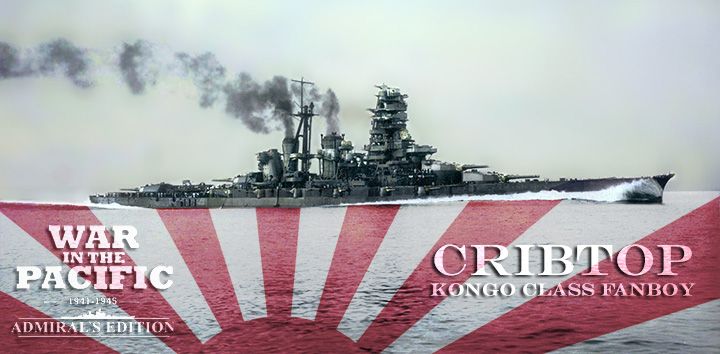Canoerebel
Posts: 21100
Joined: 12/14/2002
From: Northwestern Georgia, USA
Status: offline

|
Bridge of HMS Prince of Wales
34 miles due south of Singakwang
0400 hours 11 December 1941
Captain A.C. Collinson had little time to ponder over the suprising events that led him to command a mixed TF flagged by Britain's best ship in the PTO. The day had been filled with gunfire proxmite and distant as the enemy closed in force, apparently intent on making a forced passage to southwestern Borneo.
The Allies had either been lucky or good in implementing the Fire Team protocols that had positioned a large percentage of their assets in this region. There was a chance, even amidst the frightful confusion of events unfolding rapidly and unpredictably, that the Allies might strike effectively.
This had come at a cost, though. The RN had not expected the Japanese carrier force that was bedevling the Philippines to move so fast and so far to the south. Then Japanase army and navy strike aircraft had targeted Forze Z, flagged by Repulse, stationed just west of Singkawang. Bettys and Nells from mainland Asia had been treated roughly by a mixed bag of Allied fighters, which were then out of position so that they couldn't effectively contest a sizeable raid by IJN strike aircraft. Repulse had taken three torpedoes and was burning fiercely in Singkawang's little harbor. About the best that she could do would be to serve as bait tomorrow. Java had taken two torps, but that tough little ship might well live to fight again. She was already enroute to Soerabaja.
The Japanese carrier force was less than 200 miles NW of Kuching, the vanguard of what appeared to be an armada making for Kuching and/or Singakwang. There was at least one large combat TF, including battleships, trailing, along with what had all the makings of an invasion fleet.
The Japanese carrier TF had flown a series of missions since the start of the war. The Japs had to be running low on ordinance, but Collinson knew that there was always a tendency to undertestimate the remaining stockpiles. Nevertheless, the Allies might force a delay in the enemy invasion if the IJN carriers had to retire to re-supply.
With this in mind, orders had been issued to effect a full concentration of force - ships and aircraft - to face the enemy. By use of radio and the highly effective chain of command that allowed a surprisingly efficient distribution of aircraft on short notice, the Allies had the makings of what might be a strong airforce along the Singapore to Palembang to Borneo triangle. Heck, even the Americans were involved. The plan went like this:
1. A mixed force of bombers at various bases in Malaya - anchored by two USAAF B-17 squadrons just arrived at Singapore from the Philippines - would target the enemy airfield at Kuantan in hopes of disrupting the land-based component of the Japanese air force.
2. 31 attenuated torpedo bombers at Singapore had sufficient range to strike at any enemy ships that might stand far enough west of Borneo to fall within striking range.
3. Two small float-plane squadrons had moved to Groot Natoena and Soebi to offer close-range reconnaissance. A variety of good patrol squadrons would operate from the nearby big bases.
4. Two American A-24 dive bomber squadrons were at Kuching and were the closest strike aircraft. Palembang could contribute 32 139WH Dutch bombers and 29 Blenheims.
5. The Allies had scraped together 111 fighters based now at Singakwang, Kuching and Pontianak. This included 18 P-40Es fresh from Australia, a good Hurricane squadron, and several decent squadrons equipped with Buffaloes.
6. Collinson was disappointed that Prince of Wales would retire to the west. The idea was to keep her out of harm's way until the situation developed more fully. However, a number of small cruiser TFs would be posted near Singawang to serve as bait - as would the stricken Repulse.
Reports indicated that the Japanese carriers could be expected to put up 60 fighters and 100 strike aircraft. Zeroes and Bettys might also come from Kuantan, but after costly raids the previous two days, that threat seem diminished. Overall, the Japanese could put up a powerful force flying modern aircraft, but it was not invulnerable. To Collinson's way of thinking it made sense for the Allies to choose this place and this time to fight.
< Message edited by Canoerebel -- 12/5/2012 6:15:11 PM >
|
 Printable Version
Printable Version













 (Beware!)
(Beware!)






 New Messages
New Messages No New Messages
No New Messages Hot Topic w/ New Messages
Hot Topic w/ New Messages Hot Topic w/o New Messages
Hot Topic w/o New Messages Locked w/ New Messages
Locked w/ New Messages Locked w/o New Messages
Locked w/o New Messages Post New Thread
Post New Thread